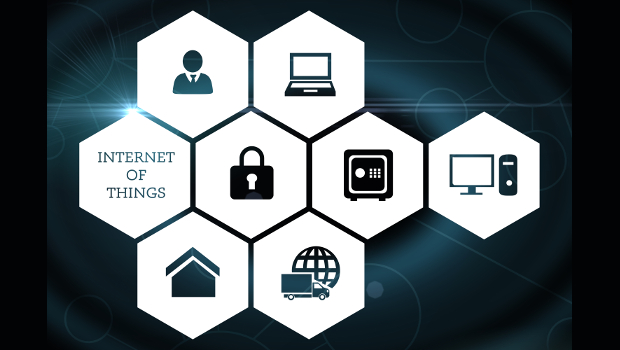The first project ‘Blue Light’ involved the national ambulance service and tracking of routes and transit times to gain a deeper understanding of routes and traffic and the variables. “The collected data over a test period was then analysed by data scientists for the benefit of the ambulance. It owns the report, but one interesting fact was that heavy traffic was in, real life, much less of a constraint than might be expected. Irish people are good at clearing out of the way and the ambulance drivers are very skilled. So, optimum route planning is actually less valuable in many respects than the experience and local knowledge of the drivers. On the other hand, that can be usefully supplemented by the data analysis.”

We have also tried energy management in a commercial application in a sector of the water industry and cut electricity bills by 30%. Some of that includes smart switching off, as common sense would dictate. But much of it has been in sophisticated forecasting of demand and market prices for electricity and choosing the optimum solutions. Dr John Barrett, Nimbus Centre
Another development project is in partnership with Analog Devices of Limerick, and again aimed at first responders others in potentially hazardous situations, Buckley says. “It is about wearable tech, in this case a full vest with multiple monitors for everything from heart and breathing rates and other personal vital signs to falls or ambient temperature. The vest links back to the testbed and potentially to the service control HQ, through the ambulance or fire service vehicle as a local Wi-Fi node. The on-site supervisor can monitor in real-time on a tablet while the data goes back to the central database for analysis. We are aiming at firefighters in the first instance and a recent demo at a conference in Barcelona evoked wide interest from international bodies.”
Retail reality
Another strand of Dell EMC research and development in IoT led out of Limerick is applications in what Marc Flanagan unashamedly calls ‘the real and practical world of business and commerce’. He gives the excellent example of Asda, the UK supermarket group owned by US giant Walmart. “With one of our partners Utilitywise, we are installing our Dell IoT gateways in over 700 Asda stores across the UK. The special target is optimum use of energy, from lighting through electric motors to refrigeration. The concept is that everything that can be will be sensorised and monitored in each store and across the Asda group. Systems already in place range from Building Management Systems by Siemens, lighting control by Philips and various other proprietary monitoring and control system in refrigeration, access and security. These are largely operations control systems, standalone and not joined up with separate control appliances for each system.”
“The Ulitilitywise solution using Dell gateways means that all of the data streams can go to that gateway as well as or rather than solely to the proprietary boxes,” Flanagan explains. “It uses Tridium software to take in and interpret all of those proprietary languages and data flows and standardise and consolidate them. That means that Asda management can have literally a single screen dashboard in head office to monitor all of those systems in all of their stores.

The objectives are innovation in a practical way, with multiple and specific use cases leading to greater understanding of reference architectures and frameworks to support successful solutions in a variety of industrial sectors. We are looking for mainstream adoption rather than academic research, Donagh Buckley, Dell EMC
“Where the rewards are, and where it all gets very clever, is in analysing energy usage. For example, if two or more stores of similar size are showing big variations in energy usage they can easily investigate the causes and save perhaps hundreds of thousands of pounds annually. Another hugely valuable element is predictive maintenance, across many systems but particularly in modern refrigeration.”
Solid and ruggedised
The Dell EMC market strategy in IoT is to provide a rock solid, ruggedised foundation of hardware and software solutions based on open standards, Flanagan emphasises. “The ability to integrate systems already in place with our standardised systems is hugely important in the real world, as is the combination of flexibility and security. We see it as critical to introduce security and data protection as early as possible into an IoT ecosystem to protect enterprise networks, data and applications.”
“Our way to address these issues is to architect an IoT ecosystem that aggregates, analyses and secures data at the edge through an optimised IoT gateway. We do not believe in one-size-fits-all architecture, especially in the IoT. Every use case and existing technology is different and customers need choice and flexibility in their gateways as everything else.”
Asavie is an Irish IoT company founded in 2004 which has developed its Passbridge software platform to enable rich connectivity. Connectivity from remote devices through mobile phone networks is often assumed as a given and relatively easy part of the IoT. But this is, in fact, seldom the case as there are multiple protocols and standards, commercial and technical variables, ever evolving cellular technologies, and differing capabilities and requirements of IoT devices and applications.
Asavie’s Tom Maher is clear that there a number of megatrends in this whole broad area, in real life and business as opposed to the ‘widgetology’ of popular media. “There is a huge coming together of various technologies in IoT, combined with costs coming down, which means that it’s not just the megascale stuff but IoT applications are really having an impact on businesses, and quite small ones at that. There are more and more entry level IoT systems.







Subscribers 0
Fans 0
Followers 0
Followers